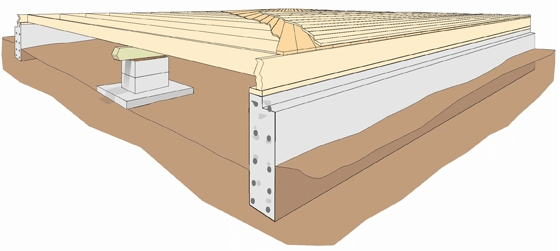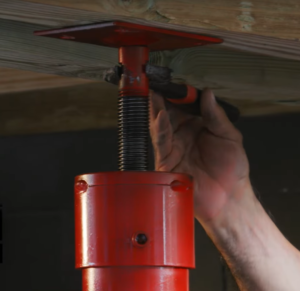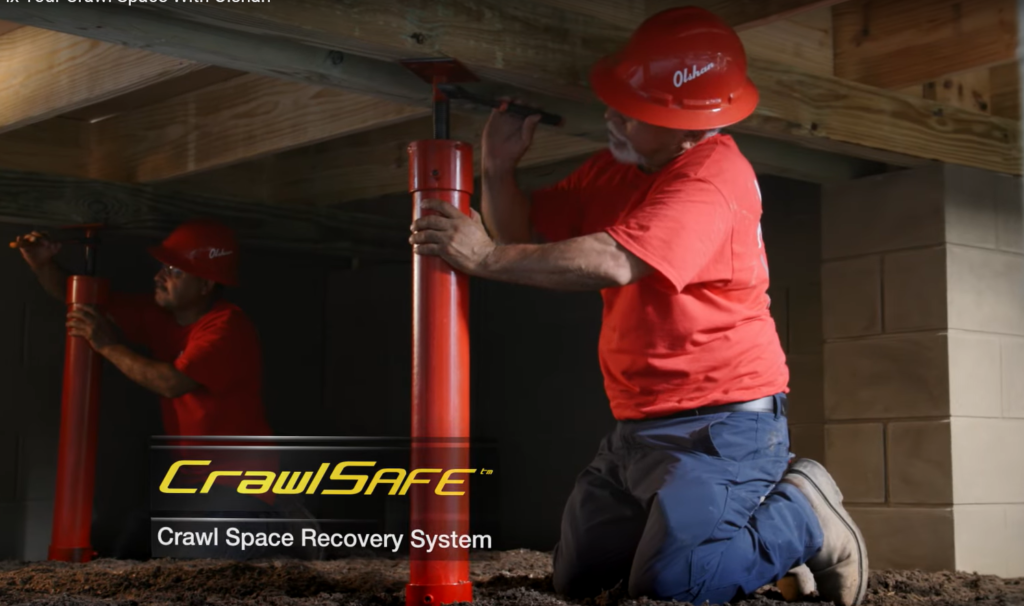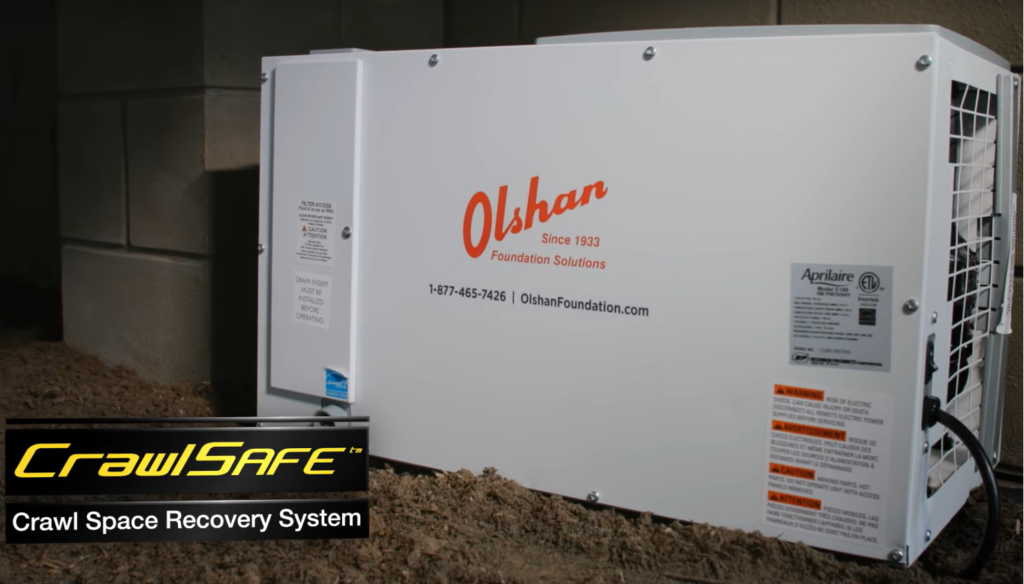What is a Pier and Beam Foundation?

The structure of a modern pier and beam foundation is pretty much like it sounds. Support beams rest on reinforced concrete posts or piers arranged in an engineered pattern that evenly distributes the weight of the house to stable soil below. Above the support beams you’ll find the floor joists and subflooring that hold up the finished surfaces you walk on inside the house.
In a pier and beam foundation, a concrete pier is reinforced with steel (rebar), forming a strong cage within the pier. The piers are set atop a concrete pad that also has been reinforced with steel rebar. The foundation beam rests on the pier or column.
What are the pros and cons of pier and beam foundations?
In most cases a pier and beam foundation includes a crawl space just below the living area. The advantage of this is that utilities and equipment that would otherwise be blocked by slabs or walls are protected from the elements yet still accessible for inspection or repair. Another advantage of pier and beam foundations is that repairing minor settling faults may be easier and less expensive than for slabs or complex poured footings. Pier and beam foundations are typically topped with a layered wood platform, so the gentle natural “flex” may also be easier on knees and backs than hard slabs, especially for seniors or people with mobility issues.
The disadvantage of a pier and beam foundation is that, although it can help to minimize temperature extremes inside your house, it’s also vulnerable to invasion by pests and unwanted moisture. Any water that enters the crawl space through cracks or condensation can gradually attack wooden parts of your structure or allow destructive mold, mildew, or various forms of dry rot to get established. This can lead not only to progressive foundation damage, but also to cumulative health risks.
What are the most common pier and beam foundation problems

Faulty construction methods or materials can be another source of foundation trouble. Structural parts that are not installed properly can fail, causing parts of your foundation to lose their load-bearing capacity. Improper soil compaction and grading is another potential problem. If one or more of the piers do not contact stable soil, or if erosion causes them to shift out of alignment, they won’t be able to do their part to keep your support beams in alignment.
Another risk to watch out for is that mold or dry rot can go undetected for a long time in hidden parts of your crawl space, especially where in areas where materials join, such as between joists and subflooring. These conditions can spread and weaken the wood parts that connect your house to the support structure. It doesn’t take much to cause serious foundation damage. Finally, normal seasonal changes in soil and ground water conditions can also cause piers to settle and shift out of alignment, especially when soil erodes and loses contact with piers.
We’ve already touched on the health risks of excess crawl space moisture, but we need to add a word about ventilation. In a sense, your house is “alive” and responds to flow and pressure changes in the air that moves around and through your living spaces. Whatever is in your crawl space will eventually mix with the air your family breathes in the rooms above. That includes mold spores that may be growing in unprotected areas. In addition to maintaining healthy air flow where it belongs, keeping unwanted moisture out is equally important.
How does pier and beam foundation repair work?
Your house has ways of telling you when foundation problems are starting to develop.
- New sags or squeaks in flooring, or areas that tilt or feel “mushy”
- New or expanding cracks in interior finish materials
- Doors or windows that begin to stick or won’t close properly
- Musty odors that won’t go away
- Cracks in exterior masonry
When you talk with a trustworthy foundation repair expert, they’ll generally advise you on two kinds of pier and beam foundation interventions. One is preventive and the other is remedial and in some situations a combination of both may be best to fully protect your home.
Most crawl spaces are big enough for an inspector or technician to get around and see what’s going on. Reputable foundation repair companies will give you a complete, no-obligation estimate and carefully explain your options so you can make an informed decision about the approach that’s best for your home and budget. Some crawl spaces are considerably smaller, and for those cases, Olshan offers high-resolution robotic technology that can detect structural faults and moisture issues that threaten the integrity and safety of your foundation.
1. Preventive measures
The best way to protect your home from foundation problems is to block them before they start. Here are some of the best ways to prevent pier and beam foundation damage.
- Install a foundation watering system to keep soil moisture constant
- Add one or more crawl space gravity drains to prevent moisture accumulation
- Check pier alignment regularly and add supporting jacks or posts as needed
- Inspect wood structural parts regularly for signs of mold and dry rot
Treat unprotected wood with a quality sealing product like LumberKote.
2. Structural repairs
Many foundation problems can be corrected quickly and inexpensively, so although there’s usually no cause for panic, it is important to call an expert as soon as you see any warning signs. These kinds of problems only get worse over time if left to themselves. Here are some of the top structural repair methods for pier and beam foundations.
- Adding new engineered support posts and/or jacks for stability and alignment
- Restoring contact between structural parts by adding or adjusting shims
- Repairing or replacing wood elements compromised by cracks or deterioration including beams, joists, or subflooring (in some markets, Olshan crews can do the woodwork but if not we have trusted partners who perform this work hand in hand with our team)
- Filling perimeter cracks and replacing damaged sill plates
- Correcting soil faults to ensure full pier contact and support
3. Air Quality and Water Management
Full crawl space encapsulation is one of the most reliable ways to protect a pier and beam foundation long-term, but most of these elements can get you great results individually or in a custom combination that’s tailored for the size and age of your home.
- Exterior water management, including grading and supplemental drainage
- Interior drainage improvements, including French drains and gravity drains
- Complete engineered vapor and moisture barrier installation
- Repair and replacement of worn out seals and sealing materials
- Manual or automatic sump pumps and dehumidifier units sized for your home
How much does pier and beam foundation repair cost?
Every home is different and repair costs will vary depending on the age, location, and size of your home. The type and extent of your foundation damage will also influence the final restoration cost, so it’s very important to get a professional evaluation from a reliable expert before you commit to spending any money. That said, national averages run between $5,600 and $8,500 for a complete pier and beam foundation repair.
We’ve also prepared this rough pricing guide to help you get a general idea of the price ranges for crawl space encapsulation.
Why get an evaluation from Olshan Foundation Repair?
Olshan has been helping homeowners like you protect their property since 1933. Our pier and beam experts can evaluate your home using a detailed checklist that we’ve been perfecting for decades. At no cost to you, we can bring all of that experience to bear to give you a complete assessment of the structural, water, and air quality conditions underneath your home.



